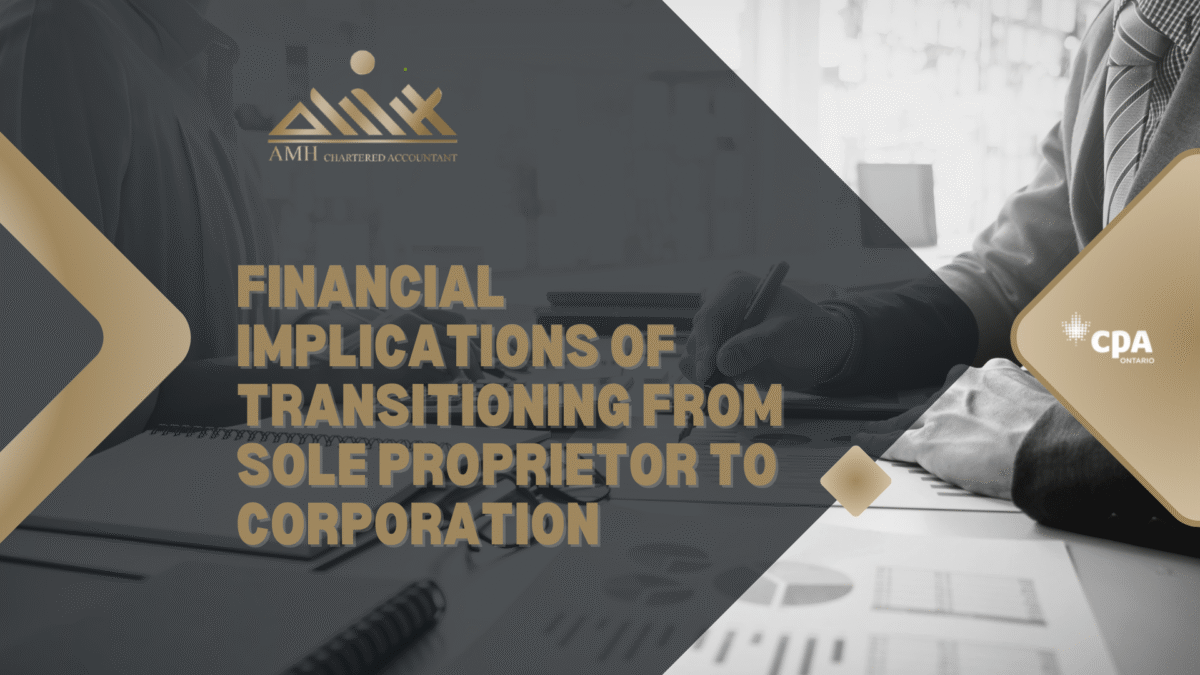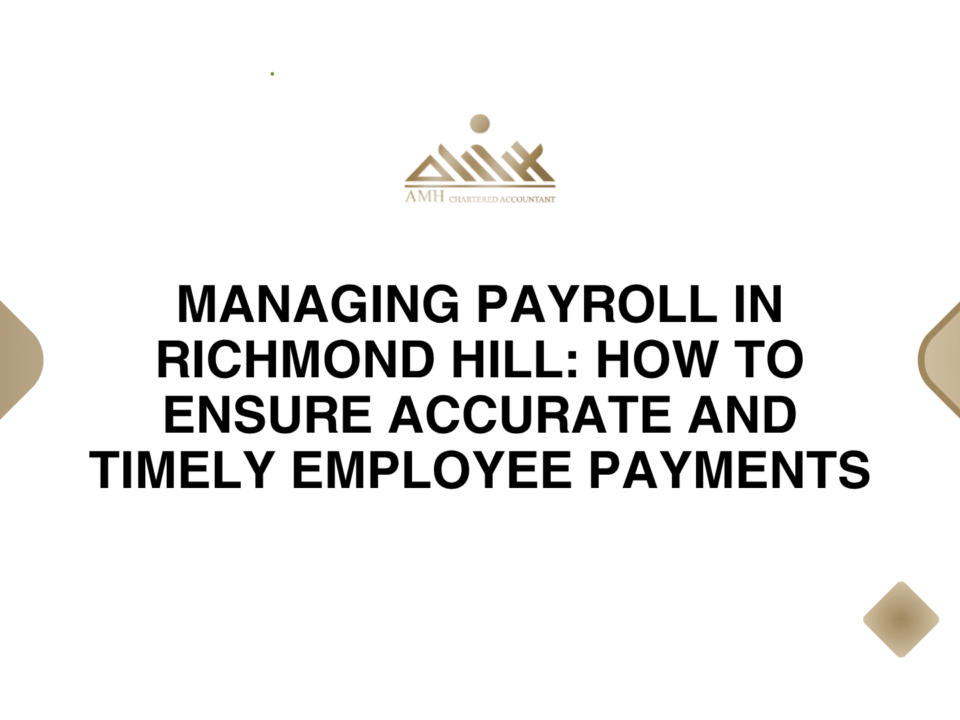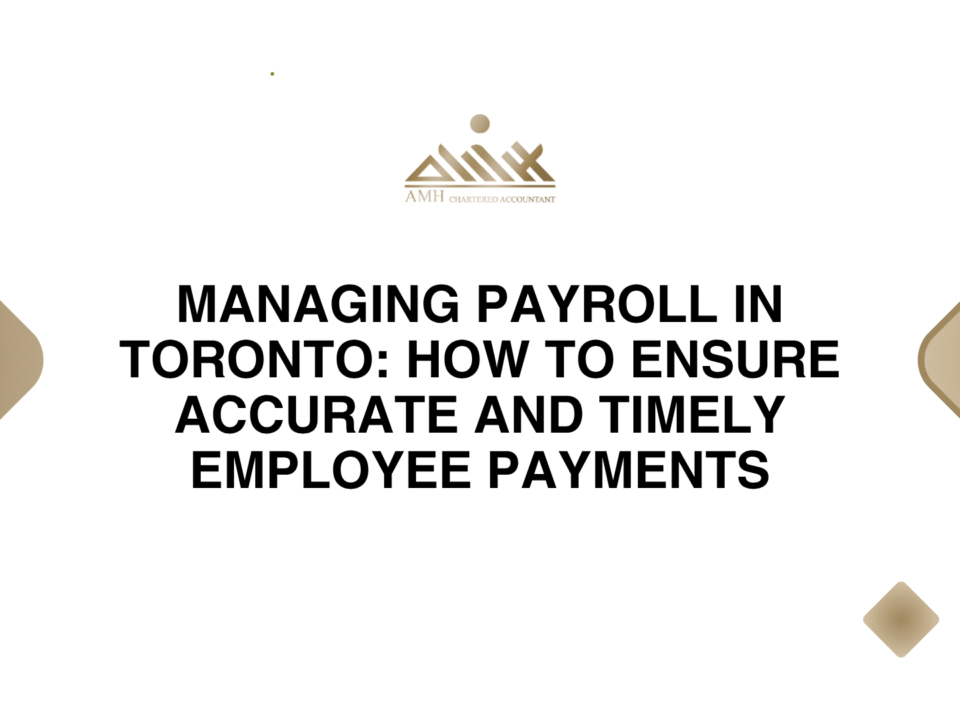
Flat-Fee vs. Hourly Pricing for Accounting Services: Pros and Cons
September 15, 2025
T2 Corporate Tax Return: What Business Owners Need to Know
September 25, 2025Financial Implications of Transitioning from Sole Proprietor to Corporation
As a sole proprietor business owner, you may find yourself reaching a point where incorporating your business as a corporation becomes a logical step for growth. While transitioning from a sole proprietorship to a corporation can offer numerous advantages, it also comes with significant financial implications that require careful consideration.
The process of incorporating can open up new opportunities, such as liability protection, tax advantages, and easier access to financing. However, it also brings new financial responsibilities and complexities that you may not have faced as a sole proprietor. At AMH Chartered Professional Accountant, we specialize in helping businesses in Toronto, Milton, Oakville, Hamilton, Kitchener, and Waterloo navigate this transition and understand the financial implications involved.
In this article, we will explore the key financial aspects of transitioning from a sole proprietor to a corporation, helping you make an informed decision about whether incorporating is the right move for your business.
Introduction: The Need for Transitioning from Sole Proprietor to Corporation
As a sole proprietor, you are likely familiar with the simplicity and flexibility of managing your own business. However, as your business grows, you may face challenges such as limited access to capital, higher personal liability, and a lack of potential tax benefits. These challenges often prompt business owners to consider transitioning from a sole proprietorship to a corporation.
Incorporating your business can provide numerous benefits, including:
Liability protection: Corporations offer personal asset protection, shielding your personal wealth from business debts.
Tax advantages: Corporations have access to different tax deductions, credits, and more favorable tax rates.
Access to capital: Corporations can raise funds more easily by issuing shares or taking on investors.
While these benefits are appealing, it’s important to fully understand the financial implications of incorporating, as the transition can have long-term effects on your business’s finances.
What Does it Mean to Transition from Sole Proprietor to Corporation?
When you operate as a sole proprietor, you are the business. This means you personally assume all risks and liabilities associated with the business, and any profits or losses are directly linked to your personal income tax return. As a corporation, the business is treated as a separate legal entity, meaning it has its own legal status and tax obligations, distinct from those of its owners.
Transitioning to a corporation involves several steps:
Registering the Corporation: You must register your business as a legal entity with the appropriate government authorities.
Creating a Shareholder Agreement: You may need to draft a shareholder agreement if you have co-owners or investors.
Transferring Assets: Assets from the sole proprietorship, such as equipment, inventory, and intellectual property, must be transferred to the corporation.
The Key Differences Between Sole Proprietorships and Corporations
To understand the financial implications of transitioning from a sole proprietorship to a corporation, it’s important to recognize the differences between these two business structures:
| Aspect | Sole Proprietorship | Corporation |
|---|---|---|
| Liability | Unlimited personal liability | Limited liability (corporation’s debts are separate from personal assets) |
| Taxation | Personal tax rates applied to income | Corporate tax rates applied, with potential for tax deferrals and deductions |
| Ownership | Single owner, no shares | Ownership through shares, which can be sold or transferred |
| Access to Capital | Limited to personal funds or loans | Easier access to capital through equity or debt financing |
| Tax Deductions | Limited deductions | More deductions available (e.g., health benefits, pension plans) |
| Duration | Ends when the owner leaves or passes away | Can exist indefinitely, regardless of changes in ownership |
Financial Implications of Incorporation
Now that we understand the basic differences, let’s explore the financial implications of incorporating your business.
1. Taxation Changes: Impact on Income Tax, Deductions, and Rates
One of the biggest financial changes when transitioning to a corporation is the shift in tax treatment. Sole proprietors report business income on their personal tax returns, which means they pay income tax based on their personal tax bracket. This could result in a higher overall tax rate if the business generates substantial profits.
Corporations, on the other hand, are taxed as separate entities at a corporate tax rate, which may be lower than the personal tax rate, especially for small businesses eligible for the small business deduction. Additionally, corporations have more flexibility in tax planning, such as deferring income or splitting income among family members who are shareholders.
Tax Benefits for Corporations:
Small Business Deduction: Canadian-controlled private corporations (CCPCs) may qualify for a lower tax rate on the first $500,000 of active business income.
Tax Deferrals: Corporations can retain earnings and defer taxes until profits are distributed as dividends or salary.
More Deductions: Corporations can deduct a broader range of business expenses, such as employee benefits, corporate pensions, and health insurance premiums.
However, while the corporate tax rate may be lower, there are additional compliance costs associated with filing corporate taxes, which can add to your operational expenses.
2. Liability Protection: Corporate Liability vs. Personal Liability
In a sole proprietorship, you are personally liable for all business debts, legal actions, and liabilities. This means your personal assets—such as your home, car, and savings—are at risk if your business encounters financial difficulties.
Incorporating your business provides limited liability protection, meaning that the corporation is a separate legal entity. As a shareholder, your personal assets are generally protected from business debts or lawsuits, except in cases of personal guarantees or fraud.
This liability protection is particularly important as your business grows and faces more risks. It can also make your business more attractive to investors and lenders, who may be more comfortable dealing with a corporation rather than a sole proprietorship.
3. Access to Capital and Financing: How Corporations Have More Access
Corporations typically have greater access to capital than sole proprietors. As a sole proprietor, your ability to raise funds is limited to your personal savings, loans, or lines of credit. Incorporating your business allows you to:
Issue Shares: Corporations can issue shares of stock to raise funds from investors or to bring in additional shareholders.
Access to Business Loans: Lenders may be more willing to extend credit to corporations, especially those with strong financials and limited liability.
Attract Investors: Corporations are often more attractive to venture capitalists or angel investors who prefer equity stakes in the business rather than lending money.
This increased access to financing can help you expand operations, fund new projects, or invest in technology.
4. Employee Benefits and Compensation: Managing Employee Costs in a Corporation
As a corporation, you can offer various employee benefits that are not available to sole proprietors, including:
Health and Dental Plans: Corporations can provide health insurance and other benefits, which are tax-deductible to the business.
Pension Plans: Corporate pension plans can be set up, providing retirement savings for employees and owners.
Stock Options: Offering stock options to employees can be an effective way to attract and retain top talent.
While offering these benefits may increase your business’s operating costs, they can also help reduce employee turnover and attract skilled professionals to your company.
5. Corporate Tax Deductions and Credits: How Incorporation Opens Up New Tax Benefits
Corporations enjoy access to a wide range of tax deductions and credits that are unavailable to sole proprietors. These may include:
Health Benefits: Premiums for health benefits for employees or shareholders are deductible for the corporation.
Capital Cost Allowance (CCA): Corporations can claim depreciation on assets used in the business.
Research and Development (R&D): If your corporation engages in R&D activities, you may qualify for federal or provincial tax credits, such as the SR&ED tax credit.
The ability to leverage these deductions and credits can significantly reduce the corporation’s overall tax liability.
The Process of Transitioning from Sole Proprietor to Corporation
The process of incorporating your business involves several steps, including:
Registering the Corporation: File the necessary paperwork with the government to create your corporation, including naming your business and selecting the appropriate structure (e.g., private corporation).
Transferring Assets: Transfer assets, such as property, equipment, and intellectual property, to the newly incorporated entity.
Issuing Shares: If you plan to have shareholders, issue shares to represent ownership in the business.
Setting Up Corporate Governance: Establish the corporation’s governance structure, including the board of directors and corporate officers.
How to Value Your Business During the Transition
Valuing your business is an essential step when transitioning from a sole proprietorship to a corporation. A professional valuation can help determine the fair market value of your assets and set the initial value of the shares issued in the corporation. It also plays a crucial role in tax planning, as the transfer of assets from the sole proprietorship to the corporation may have tax implications.
The Role of an Accountant in the Transition Process
Navigating the transition from sole proprietor to corporation can be complex, and it’s crucial to have an experienced accountant on your side. At AMH Chartered Professional Accountant, we provide comprehensive services during the transition, including:
Tax Planning: Helping you minimize taxes through effective incorporation strategies.
Business Valuation: Conducting a fair market valuation of your business for the asset transfer.
Incorporation Support: Guiding you through the steps of incorporating, including legal and regulatory compliance.
Common Mistakes to Avoid During the Transition
Underestimating the Tax Implications: Failing to plan for the tax impact of incorporating can lead to unexpected liabilities.
Improper Asset Transfer: Not properly transferring assets from the sole proprietorship to the corporation could result in tax consequences.
Ignoring Corporate Governance: Failing to establish a solid governance structure can lead to management and operational issues down the line.
How AMH Chartered Professional Accountant Can Support Your Transition
At AMH Chartered Professional Accountant, we specialize in helping business owners transition from sole proprietorship to corporation. Our team provides expert guidance in tax planning, business valuation, and the incorporation process, ensuring a smooth and financially sound transition.
Conclusion: Weighing the Financial Pros and Cons of Incorporation
Transitioning from a sole proprietorship to a corporation offers numerous financial benefits, including liability protection, tax advantages, and access to capital. However, it also brings new complexities, such as increased administrative costs, regulatory requirements, and the need for careful financial planning. By understanding the financial implications and working with an experienced accounting firm, you can make an informed decision about whether incorporation is the right move for your business.
FAQs
What are the tax advantages of incorporating?
Corporations benefit from lower corporate tax rates, tax deferrals, and access to a wider range of tax deductions and credits.
How do I transfer assets from a sole proprietorship to a corporation?
Assets are transferred at fair market value, and there may be tax implications to consider. It’s essential to consult with an accountant during this process.
How long does it take to incorporate?
The process typically takes a few weeks, depending on the jurisdiction and the complexity of the business structure.
Can AMH help me with the incorporation process?
Yes, AMH Chartered Professional Accountant can guide you through every step of the incorporation process, including tax planning and asset transfer.




